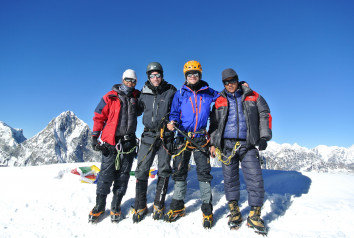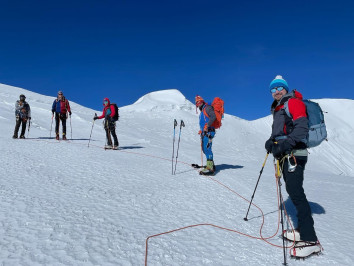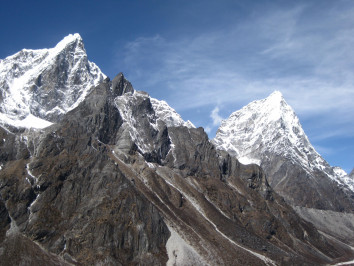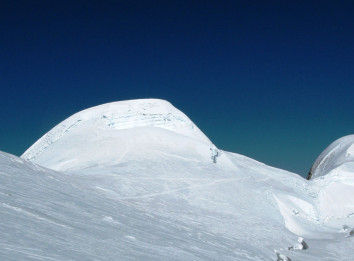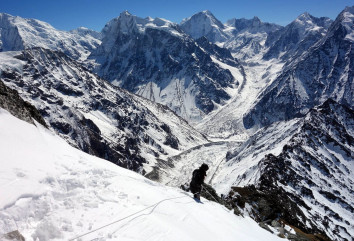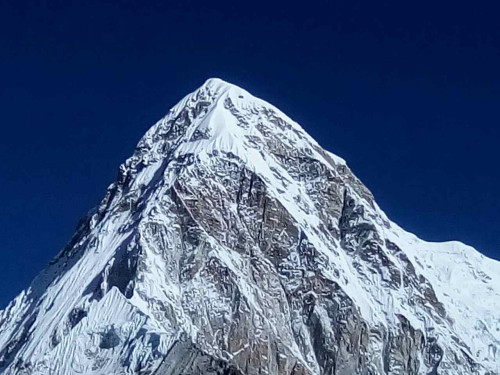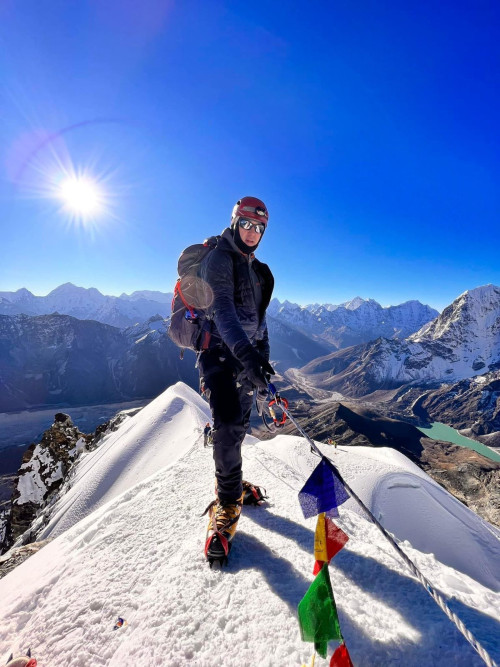Major Highlights of Bohktoh Peak Climbing
- Bohktoh Peak Climbing is best for intermediate mountaineers who want to sharpen their climbing skills.
- Bohktoh Peak summit at altitude 6,143m gives the best climbing experience.
- Semi technical climbs and trip difficulty are strenuous.
- Classified as a Class A mountain by Nepal Mountaineering Association.
- Striking views of Mt. Kanchenjunga, Dhormor, Nupchu, Kumbhakarna, and other peaks from the Bohktoh Peak summit.
- The less explored trail of Kanchenjunga Base Camp and the Bohktoh Peak route allows genuine trekkers to explore the landscape to the fullest.
- Witnessing some exotic wild animals of this landscape en route to Kanchenjunga Base Camp and Bohktoh Base Camp.
Bohktoh Peak Climbing - Trip Overview
Some climbing peaks in the Himalayas, such as Bohktoh Peak, are less explored. On the lap of Mt. Kanchenjunga, Bohktoh Peak, at 6,114 metres, stands as the ideal place for intermediate climbers who want adventurous climbing. Longer trek and climbing days to the Bohktoh Peak expedition make it a less crowded hub than EBC and ABC.
Back in 1991, an expedition team from Slovakia successfully summited Mt. Kanchenjunga. The summit push was from the southeast Ridge of Kanchenjunga. The expedition made Bohktoh Peak renowned because they climbed Bohktoh as an acclimatisation peak. The trekking to Kanchenjunga Base Camp and Bohktoh Peak was not open until 1998. Nepal Tourism Board used to regulate the activities in this peak before 2002. Later in 2002, Nepal Mountaineering Association grouped Bohktoh Peak as Grade A mountain for climbing and started issuing climbing permits.
The beauty and technicality of Bohktoh Peak Climbing make every travel enthusiast admire it. The true adventure of the 6,000 metres peak unfolds here at the off-the-beaten trail of Kanchenjunga Base Camp. Also, for avid climbers, who have several 6,000 metres peak climbing experience, Bohktoh Peak is excellent to master their climbing techniques.
Even to the locals, finding the independent route to Bohktoh is cumbersome. Only skilled guides and climbers can find the way to the peak and its summit. Thus, every trekker to Phoktoh Peak Climbing follows the route to Kanchenjunga Base Camp in the South.
Nearly a month-long expedition of Boktokh peak climbing takes you through one of the most diverse ecosystems of Eastern Nepal.
The lush vegetation of Taplejung, rhododendron forests at Amjilosa, and above are heavenly. The alpine landscape at Lumba Sumba Kharka and Lapsang La at 4,500 offer the experience of high-altitude trekking.
The serene snow filled landscape of Bohktoh and Kanchenjunga Base South offers a majestic view of several peaks. Mt. Kanchenjunga at 8,586 metres, Mt. Dhormo at 6,850 metres, and Kumbhakana at 7,710 metres are the prominent mountains of this region.
Bohktoh Peak Climbing - Itinerary Overview
Bohktoh Peak climbing at 6,114 requires many preparations and well acclimatisation. Since this expedition to Kanchenjunga Base Camp South is nearly a month-long, we'll need more rest. Thus, our expert-designed Bohktoh Peak climb package comes with adequate rest and acclimatisation.
We'll fly to Suketar from Kathmandu and hike to Mitlung overnight. The hike in the coming days will be to Lelep, Amjilesa, Gyabla, and Gunsa. Gunsa is at 3,595 metres, where we'll acclimatise for a day.
To continue, we'll hike to SInion, Slelele Phedi, Tseram, Ramachaur, and Bohktoh Peak Base Camp at 4,500 metres. We'll set our tents and will be staying camping style overnight. Our Sherpa and Climbing guides will do training sessions for you.
On the next day, we'll climb to the High Camp at 5000 metres. With the clear weather window, we'll climb the Bohktoh Peak summit in the early morning and return to Lapsang La (base camp) overnight. We'll climb to the summit on mixed terrain of rocks, snow, and ice. Thus, you must have the idea of using crampons, an ice axe, walking on a man rope, ascending on the harness, abseiling, etc.
Kanchenjunga, Kumbhakarna, Kirat Chuli Peak, and Dormo Peak stand spectacularly from the summit. The tiring expedition and a summit climb of Bohktoh Peak Climbing are worths the sightseeing.
There'll be one extra day as a reserve day for rest if you are tired from the summit day. You can stay at Bohktoh Peak Base Camp.
Retracing the route back, we'll descend to Tseram the next day. By hiking some more days, we'll reach Bhadrapur and fly back to Kathmandu. It marks the end of your successful Bohktoh Peak Climbing expedition.
Bohktoh Peak Climbing - Difficulties
Bohktoh Peak Climbing and expedition is in the remote place of Eastern Nepal. We'll hike on the Kanchenjunga Base Camp route for most of this expedition, and it will be strenuous. The longer hiking hours each day are tiring. Also, the rugged landscape, wind, and cold make the day hike disturbing. Altitude sickness is also likely to occur over 3,500 metres.
You must be mentally, physically, and technically strong to complete the trek and climb Bohktoh Peak. Classified as Grade A Climbing Peak, it is for intermediate climbers who already have previous 6000 metres of climbing experience. Thus, novice climbers are not suited for this trip. Besides, your physical fitness must be in ideal shape. Cardiovascular training is a must for intermediate climbers too.
Best time for Bohktoh Peak Climbing
Trek to Kanchenjunga Base Camp and Bohktoh Peak climbing route is of diverse landscape. At high altitudes, the weather varies frequently.
But, for the most part, Spring and Autumn are the best times. The consistent weather and temperate days make the hike ideal. The clear sky and crispy views of hills, jungles, and mountains make the trip one of a kind. The autumn leaves at high altitudes make the scenery vivid. Also, the thick snow remains of winter in Spring makes the summit enjoyable.
But, winter is harsh, and temperatures fall below freezing. Also, the frequent rainfall during summer makes the trail slippery. Thus, the Winter and Summer are not best for Bohktoh Peak Climbing.
Accommodation in Bohktoh Peak Climbing
We'll be staying at tea house-based accommodations for most of the Bohktoh Peak Climbing and expedition trip. During the peak trekking and climbing season, local people run the tea houses on this route. You'll get the basic food requirements like Dal Bhat, Eggs, Veggies, Meat, etc. Inform us before the trekking if you have any meal requirements or food allergies.
While camping at Bohktoh Peak Base Camp and High Camp, we'll set up tents for overnight sleep. Here, we'll stay in camping-style accommodations. Our chefs will prepare nutritious meals for you.
In Kathmandu, you'll get three-star hotels to stay in. We'll recommend the places for you too.

 Recommended On
Recommended On
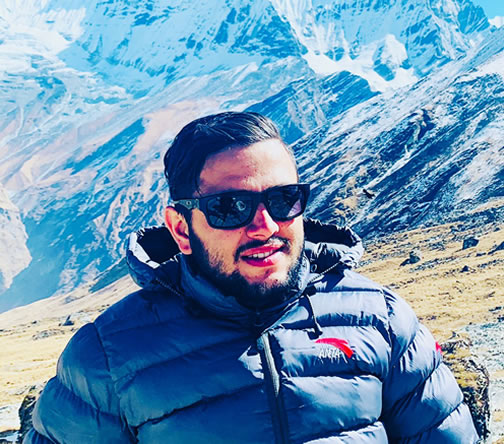



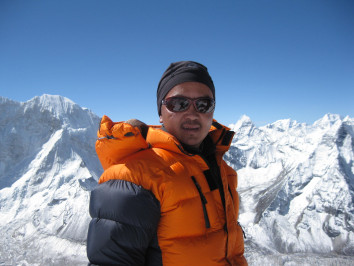
 6000m Peak Climbing , Nepal
6000m Peak Climbing , Nepal  29 Days
29 Days  US$3400
US$3400



-1.JPG)
